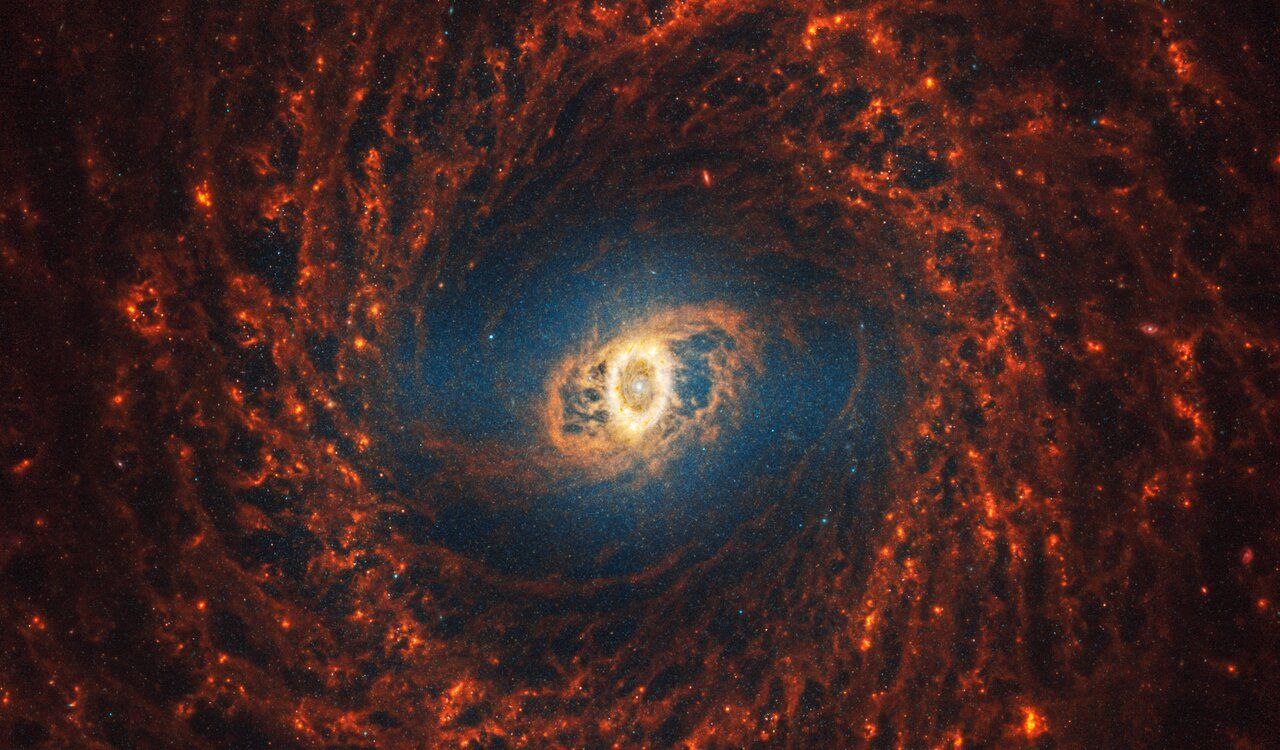May 21, 2025 | Science & Space News
In a landmark discovery that challenges long-standing theories of galaxy formation, NASA’s James Webb Space Telescope (JWST) has detected one of the earliest known spiral galaxies, named Zhúlóng, dating back over 12.8 billion years. This revelation offers a new perspective on how complex galactic structures may have emerged shortly after the Big Bang.
🛰️ A New Chapter in Cosmic History
The galaxy, recently named Zhúlóng—inspired by a legendary Chinese dragon symbolizing light—was detected through observations made by the James Webb Space Telescope’s Near Infrared Camera (NIRCam). Scientists were stunned by the galaxy’s well-defined spiral arms, an architectural feature previously believed to require billions of years of galactic evolution.
“Finding such a structured spiral galaxy at a time when the universe was just around 900 million years old reshapes our understanding of the early cosmos,” said Dr. Liang Wu, a principal investigator at the Cosmic Dawn Center in Copenhagen, played a key role in analyzing the groundbreaking discovery.
🔭 Why the Discovery Matters
Galaxies in the early universe were thought to be small, chaotic, and lacking the order seen in modern spiral galaxies like our own Milky Way. Zhúlóng’s spiral structure—along with its stellar mass comparable to the Milky Way—indicates that some galaxies matured much faster than previously thought.
This discovery suggests that spiral galaxy formation may not take several billion years as once believed, but could occur much earlier through more efficient star formation and gravitational dynamics.
🌌 A Glimpse Into the Past
The light captured from Zhúlóng has traveled over 12.8 billion light-years to reach us, essentially acting as a cosmic time machine. Thanks to JWST’s cutting-edge infrared capabilities, astronomers can now peer deeper into the universe than ever before, revealing galaxies formed just a few hundred million years after the Big Bang.
The Webb telescope’s precision instruments are allowing scientists to view the universe’s “cosmic dawn”—the period when the first galaxies and stars began to illuminate the cosmos.
🧪 Advanced Technology Enables Breakthroughs
Unlike its predecessor Hubble, which struggled to capture high-resolution images of very distant objects, JWST is optimized for detecting infrared light, which travels more efficiently across space and time. With its 6.5-meter primary mirror and instruments cooled to near absolute zero, the telescope can detect the faintest signs of starlight emitted in the ancient universe.
Using advanced spectroscopy and high-resolution imaging, astronomers examined Zhúlóng’s chemical makeup, estimated its age, and tracked its movement through space. Preliminary results suggest active star formation and even the possibility of a central black hole, adding more intrigue to its rapid development.
🔮 What Comes Next?
The discovery of Zhúlóng is expected to trigger a wave of research on early galactic dynamics, dark matter influence, and the conditions that allowed spiral structures to form so early. Scientists are now combing through more JWST data to find similar anomalies that may further challenge or refine existing cosmological models.
“This is just the beginning,” said Dr. Wu. “James Webb is rewriting the history books of astronomy, one galaxy at a time.”
🔑 Key Takeaways
- Zhúlóng is one of the oldest known spiral galaxies, dated at 12.8 billion years.
- The discovery was made using the James Webb Space Telescope’s powerful Near Infrared Camera (NIRCam), designed to capture distant light from the early universe.
- Challenges current models of galaxy evolution by showing early spiral formation.
- Opens new research avenues into cosmic structure, dark matter, and galaxy dynamics.
Stay tuned for more discoveries as the James Webb Space Telescope continues to explore the farthest corners of the universe—bringing the ancient past into focus with unprecedented clarity.





